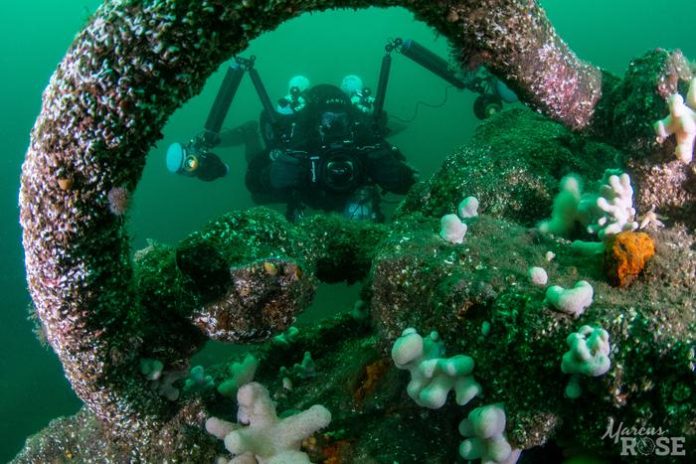A new study reveals that an estimated 50,000 shipwrecks around the UK’s coastline are acting as hidden sanctuaries for marine life, providing refuge for fish, corals, and other species in areas still susceptible to destructive bottom towed fishing. Many of these shipwrecks have rested on the seabed for over a century, deterring fishers who utilize bottom towed trawling methods. Consequently, while heavy fishing pressure has significantly damaged many areas of the seabed, those in and around shipwrecks remain relatively unharmed.
The research, conducted by the University of Plymouth and Blue Marine Foundation and published in the journal Marine Ecology, is the first to demonstrate the increased ecological importance of shipwrecks and their surrounding areas in regions with intense fishing activity. The study found that the average density of marine life in areas open to trawling was 240% higher within wreck sites compared to sites actively used for bottom towed fishing.
In the proximity of the wrecks, within a 50-meter radius, the density of marine life was even more pronounced, showing a 340% increase compared to control sites. Conversely, in areas closed to trawling, abundance was 149% greater than on wrecks and 85% higher than on the seabed within a 50-meter radius of the wrecks.
Jenny Hickman, the study’s lead author, emphasized the historical significance of shipwrecks as they offer a baseline of ecological potential when trawling pressure is reduced or removed. The study focused on five shipwrecks off the Berwickshire coast, sunk in the late 19th and early 20th centuries, assessing their ecological impact and the surrounding areas.
The research provides valuable insights into the potential benefits of reducing bottom towed fishing activity, shedding light on the crucial role shipwrecks play in offering sanctuary to marine species. The findings advocate for the inclusion of wreck sites in future conservation plans and underscore the advantages of Marine Protected Areas (MPAs) status.
Dr. Emma Sheehan, Associate Professor of Marine Ecology and senior author, highlighted the positive impact of past human activity on the seabed today, emphasizing the importance of incorporating this knowledge into future marine management plans. The study contributes to ongoing efforts to protect marine environments, aligning with the global goal of having 30% of the ocean protected by 2030.















